“Nothing good comes from hiding the truth. We can listen to all of the podcasts, read self-help books, write down our feelings, or sit in our dark closet of comfort to feel better. But does that really help? Surely not. With little legs and a big heart, I believe scars are stories meant to be shared.
For me, it all began in third grade, when our class read a story about a little girl named Jamie. Flipping through the pages of ‘Thinking Big,’ I could not help but notice how uncanny our similarities were — Jamie looked just like me. She had short arms and legs. She used a stool at the bathroom sink when brushing her teeth. She couldn’t reach the light switches in her house. And she even called her grandmother ‘Mimi.’ After finishing the story, my entire third-grade class knew I too was a little girl with achondroplasia dwarfism. As for me, I not only felt seen but also a little less alone.
My teachers immediately suggested I make a presentation of my own. What was it like to be Kristen? What did I want my classmates to know? Jamie and I were similar — sure. My story was also vastly different. So, my best friend Liz and I made a movie. We hoped by sharing my story and our friendship, perhaps our peers would gain compassion and understanding.
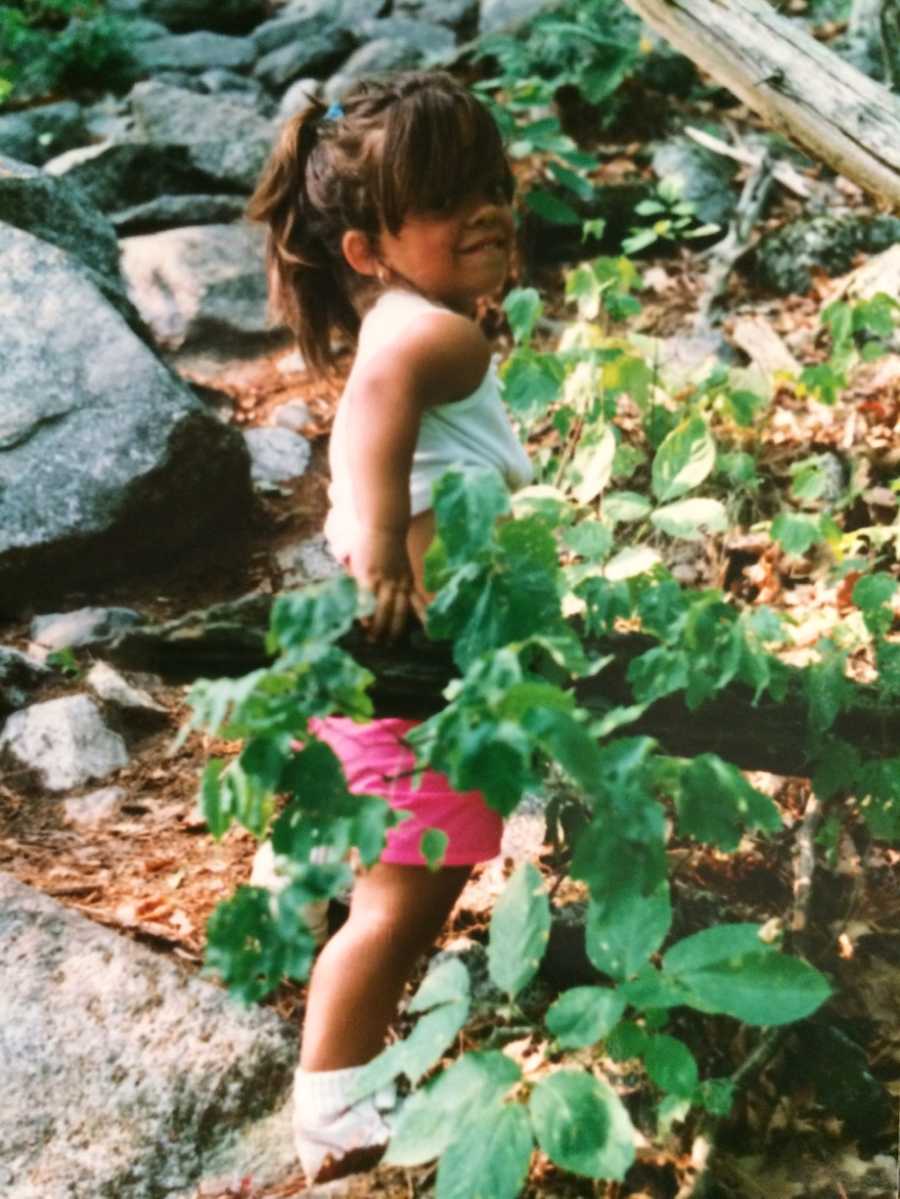
Together, Liz and I showed how I struggled with the obvious task of reaching objects up high, how sitting in a regular chair, with my legs sticking out straight, caused them to fall asleep and hurt. We explained midget was considered a mean word, dwarf was the medical term, and I preferred to be called Kristen. For the first time, I openly spoke about the ‘operation,’ otherwise known as extended limb lengthening. At only 9 years old, I had a very concrete vision of pursuing the procedures with the support of my family. Then there were the highlights of being vertically challenged. Like how I could lower all the way down into a split without even flinching or put any breakdancer to shame with my version of the caterpillar. And my very special stunt that, to this day, makes me cringe and my joints ache. Little me could sit down and stand up without bending my knees. Yes, ouch.
At the end of our presentation, arms around each other, Liz and I told everyone, ‘It doesn’t matter if you’re tall or small, you can still be friends.’ Fresh out of the mouths of 9-year-old babes. Not only was it the first time I had actively advocated for myself, I also remember the thought of writing my own book someday floating into my consciousness. I may have been tiny but my voice was already becoming loud.
The summer after sixth grade I underwent my first of three lengthening procedures with Dr. Dror Paley at The Maryland Center for Limb Lengthening and Reconstruction. My goal was to gain six inches of new length in my lower legs and make them straighter. Starting seventh grade in a new school with kids I didn’t know from other towns was incredibly intimidating. One of our first assignments in my health class was a project on a diagnosis or disease approved by the teacher. Remembering what it felt like to have the understanding of my third-grade class, I decided it was time to advocate for myself again — what better way to break the ice.
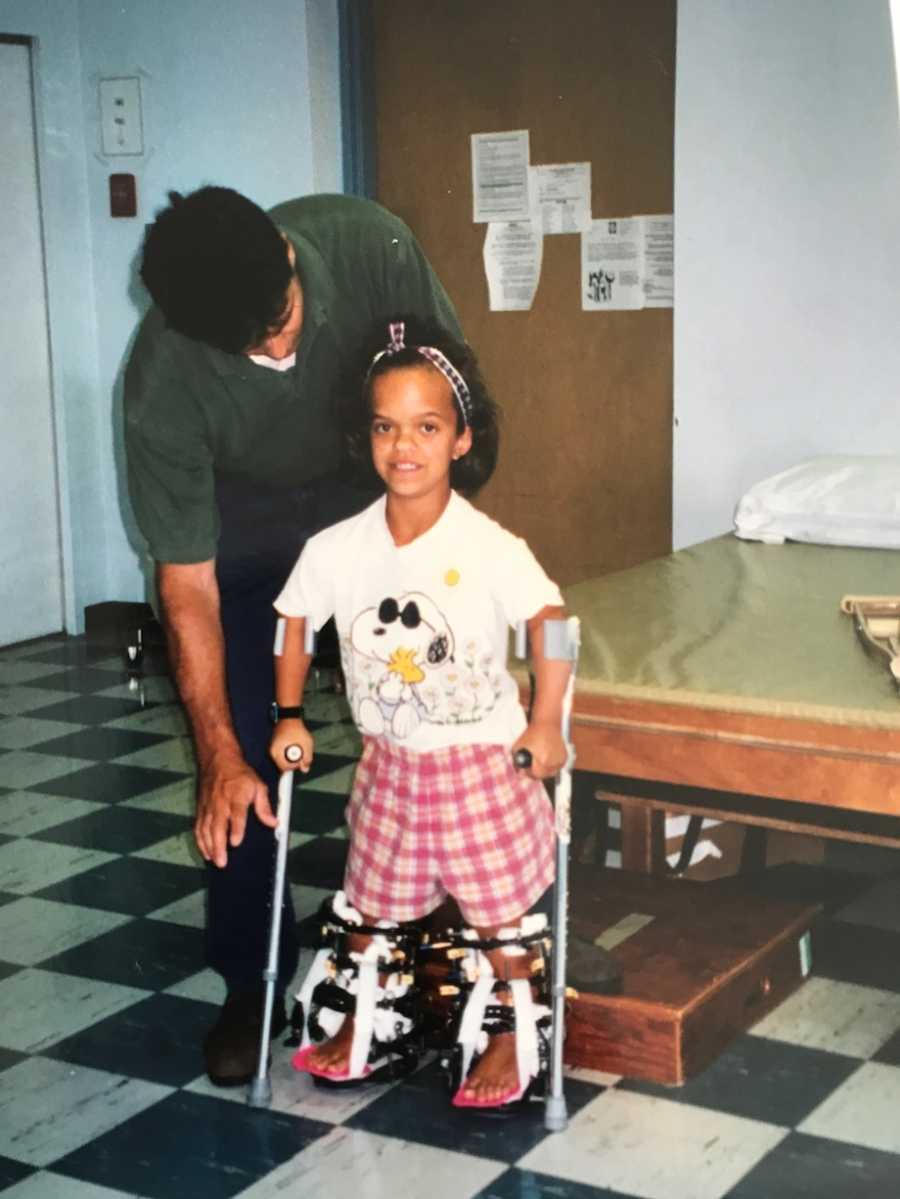
While achondroplasia and limb lengthening didn’t really fall within the middle school health curriculum, my teacher more than obliged to my idea. By being open about dwarfism, the surgeries I was undergoing, and how the words and actions of society, in general, made me feel, I began to realize I was fighting the good fight — educating, opening eyes, creating awareness, and changing the dialogue society had, not just about achondroplasia, but differences in general. Rolling down the hallway in my wheelchair became a little less awkward after I presented my health project and my peers seemed more comfortable around me.
Towards the end of my final procedure, on my femurs, upon which I found myself standing thirteen inches taller, there was an article in the newspaper about Dr. Paley and limb lengthening. All I remember is my proud, giant smile fading as I reached the end of the article where they interviewed a member of the LPA (Little People of America), who essentially told readers limb lengthening was cosmetic and people could get nerve damage or even worse, die from undergoing the surgeries.
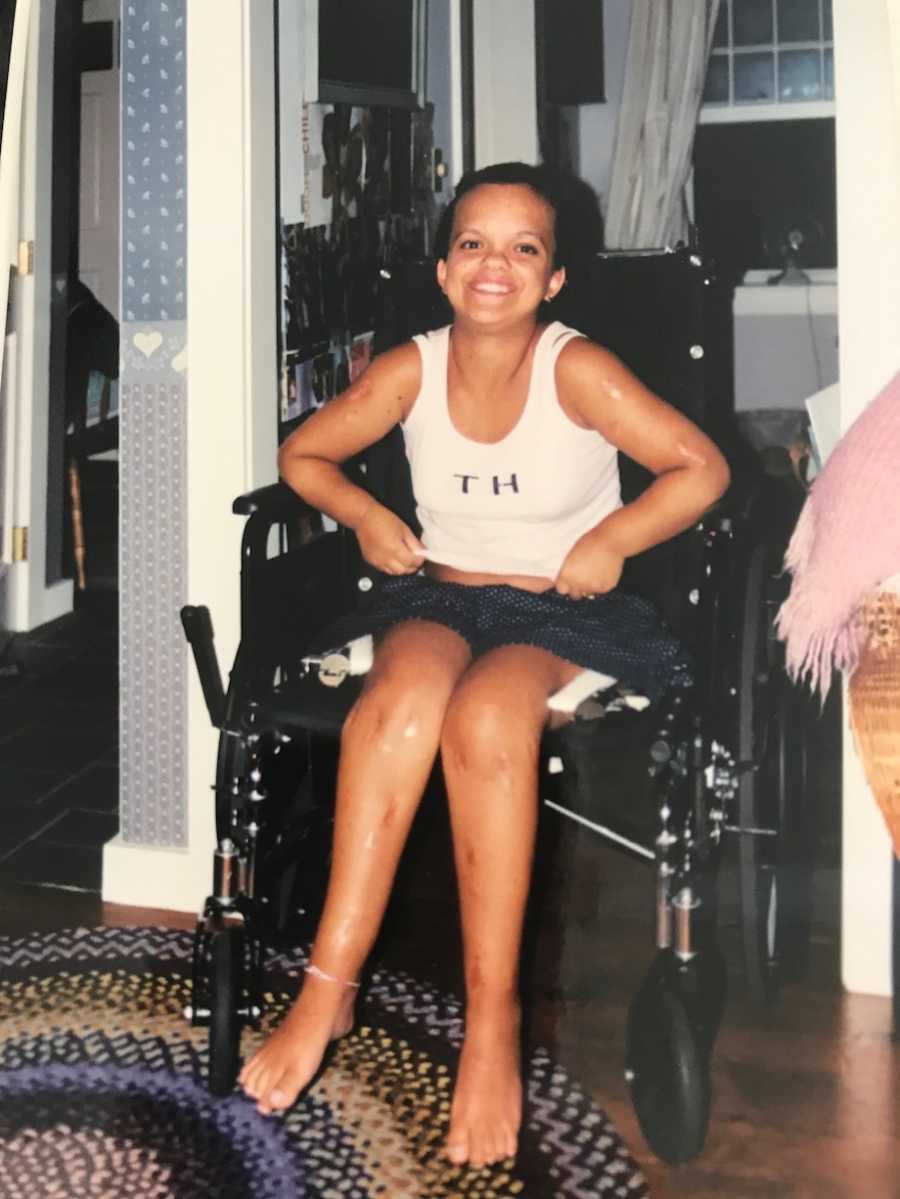
Newsflash: the risks for any surgery for which you are put under anesthesia and/or you experience trauma to the bones, muscles, and fascia can include nerve damage and death along with many others. There was no way I was letting this ridiculousness fly under the radar. The following week, my ‘Letter to the Editor’ was published. Realizing the controversy, how limb lengthening was viewed through a very skewed and negative lens by so many, my arguments in favor of personal choice and the benefits of the surgeries didn’t stop there.
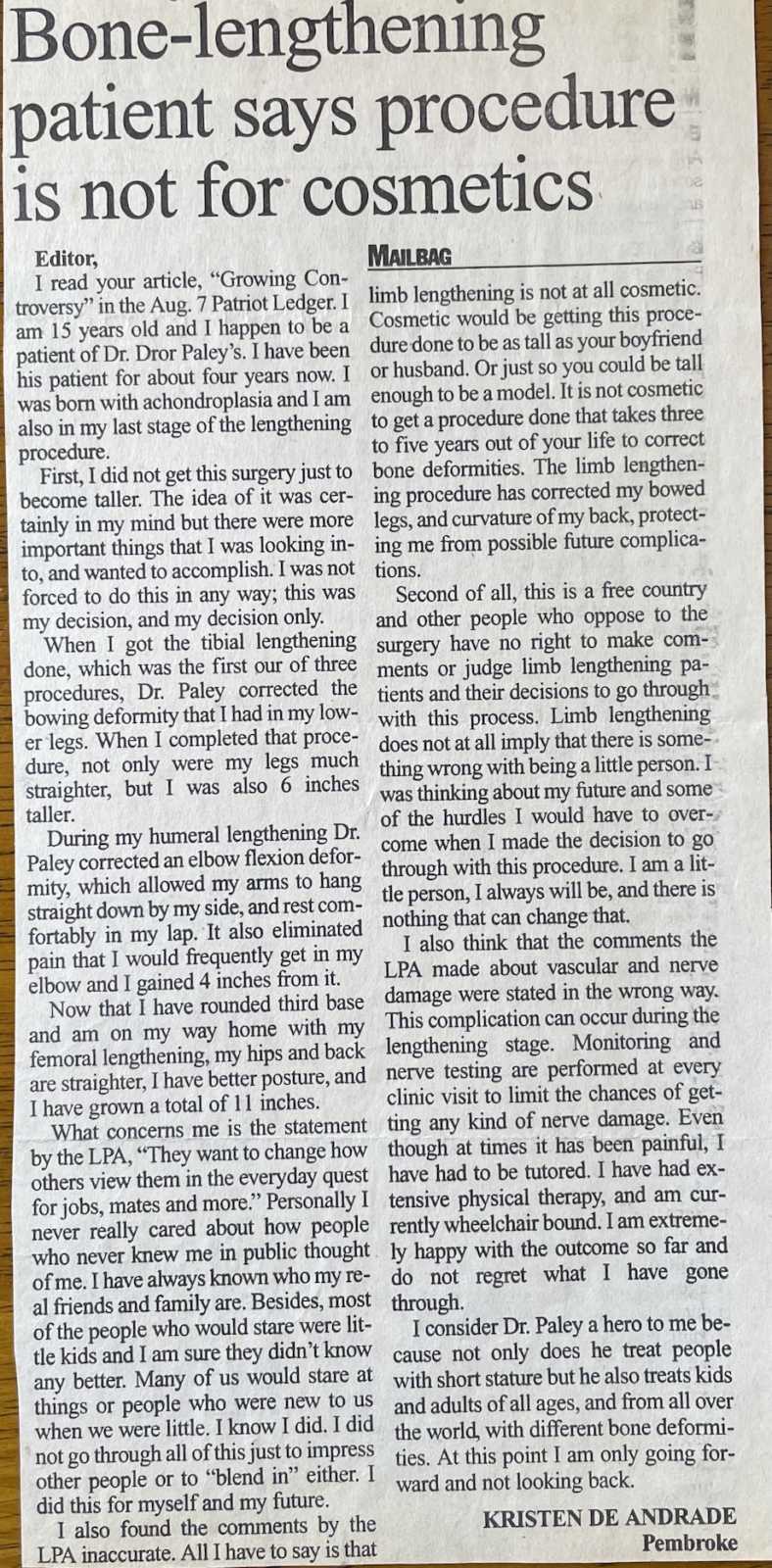
After completing all of the procedures in 2001, I continued to be an advocate for those who chose to undergo limb lengthening. For almost 4 years, I was in and out of the hospital and crossed paths with people who taught me courage, strength, compassion, and how to love the journey I was on. The immensity of that experience alone is nearly impossible to put into words unless you have lived it. Height is just a measurement, scars were and are proof of my past. In speaking from experience, I eventually found myself on The Maury Show (hey, a girl’s gotta start somewhere), CBS Sunday Morning News, and The Learning Channel. Again, I felt it, the alchemy we all come to know at one point or another in our lifetime, what began the moment I stood in front of my class as a child, to understand the enormity of my role in this life.
After college, I learned the outside world puts forth a valiant effort in trying to make us become someone we are not. Society led me to believe I was not enough. Truth is, they are wrong. I am more than a diagnosis, a statistic, a label, or a condition. Living in the face of adversity is hard and looking back, I wish I had been encouraged to talk about my sadness, fear, and anger more. In not doing so, I became more supportive of others than myself. Suppressing the fact I was struggling with some serious self-esteem and body image issues, pain became something I was really good at. Physical or emotional. I expected it. I tolerated it. And I hid it — well.
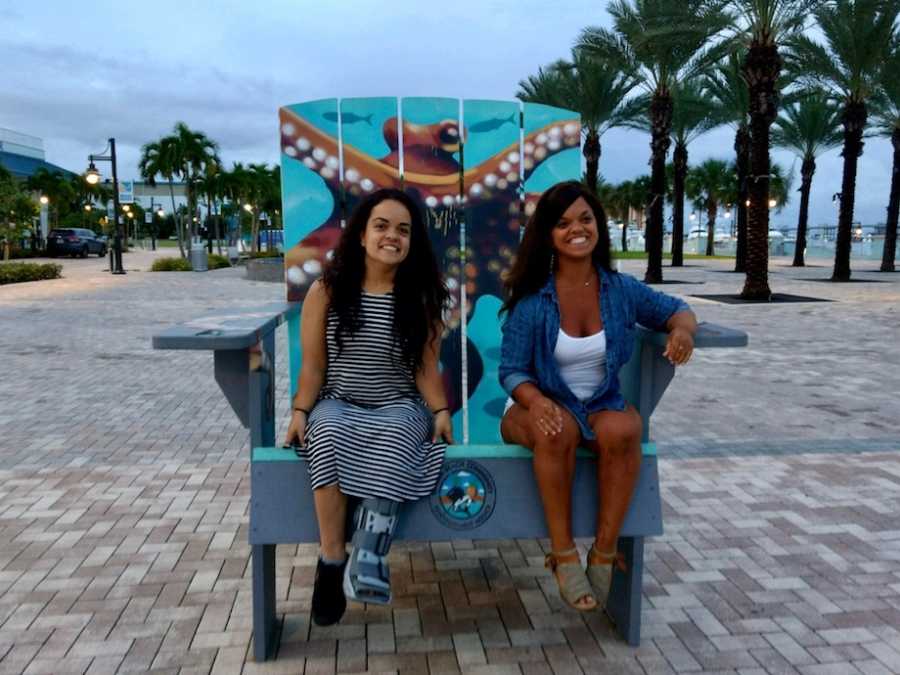
At the urging of friends, I took one good look at myself in the mirror, realized how uncomfortable I was in my soul suit (my fancy term for human body), took full responsibility, and acknowledged my thoughts and actions were not serving me personally in a positive way. I knew I deserved so much more. After working with a life coach and discovering the practice of yoga, my love tank began to refill itself and I was able to honor my soul suit for all that it was; the highs, the lows, and all of the beauty in between. After becoming a certified yoga teacher for both children and adults, my focus became kids. Through the eyes of children, you see the world just as it ought to be. They embrace different as beautiful. You can tell a child a different-ability is not a disease and they get it. I was a woman continuing her own journey of self-discovery, healing, and love and shared it through writing on platforms like The Mighty, Mind Body Green, Refinery 29, Women’s Health, and The Huffington Post.
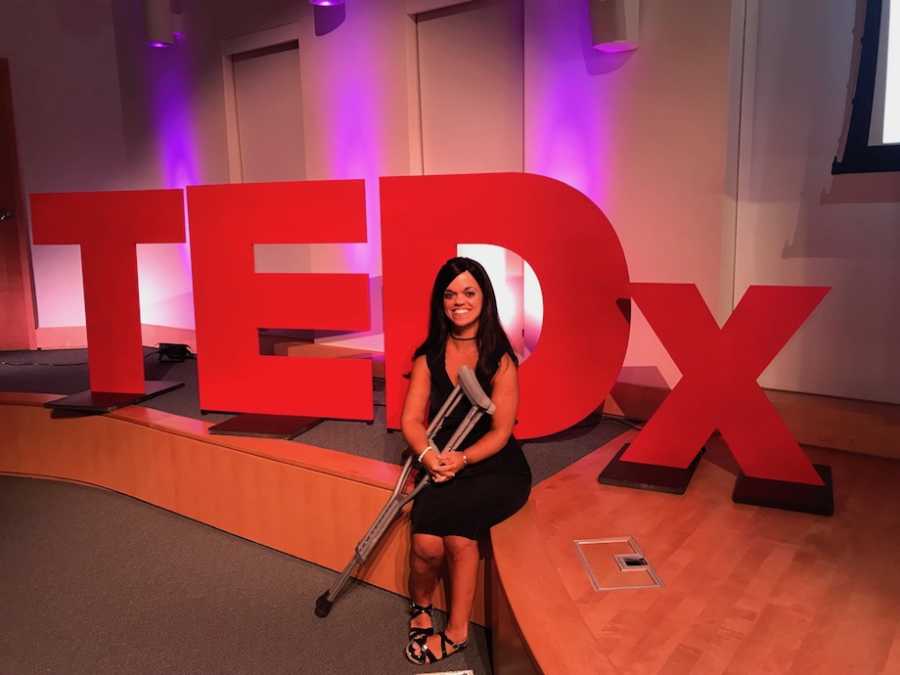
Living with dwarfism is a lifelong journey and the consequences come with the territory. At the age of 29, I unexpectedly lost feeling and sensation from the waist down. The pain that rattled my soul suit would not have registered on the Richter Scale. After multiple doctor’s visits, I was diagnosed with spinal stenosis and told nothing more could be done. After a year, my pain worsened and I could barely walk. By the time I found the man who would essentially save these little legs, I was walking a narrow tightrope to paralysis. Dr. David Feldman at the Paley Orthopedic and Spine Institute took one look at my MRI and said I had no choice but to undergo surgery. Sad, defeated, angry; all of the dark feelings no one ever wants to talk about swirled around like a violent tempest in my heart and mind.
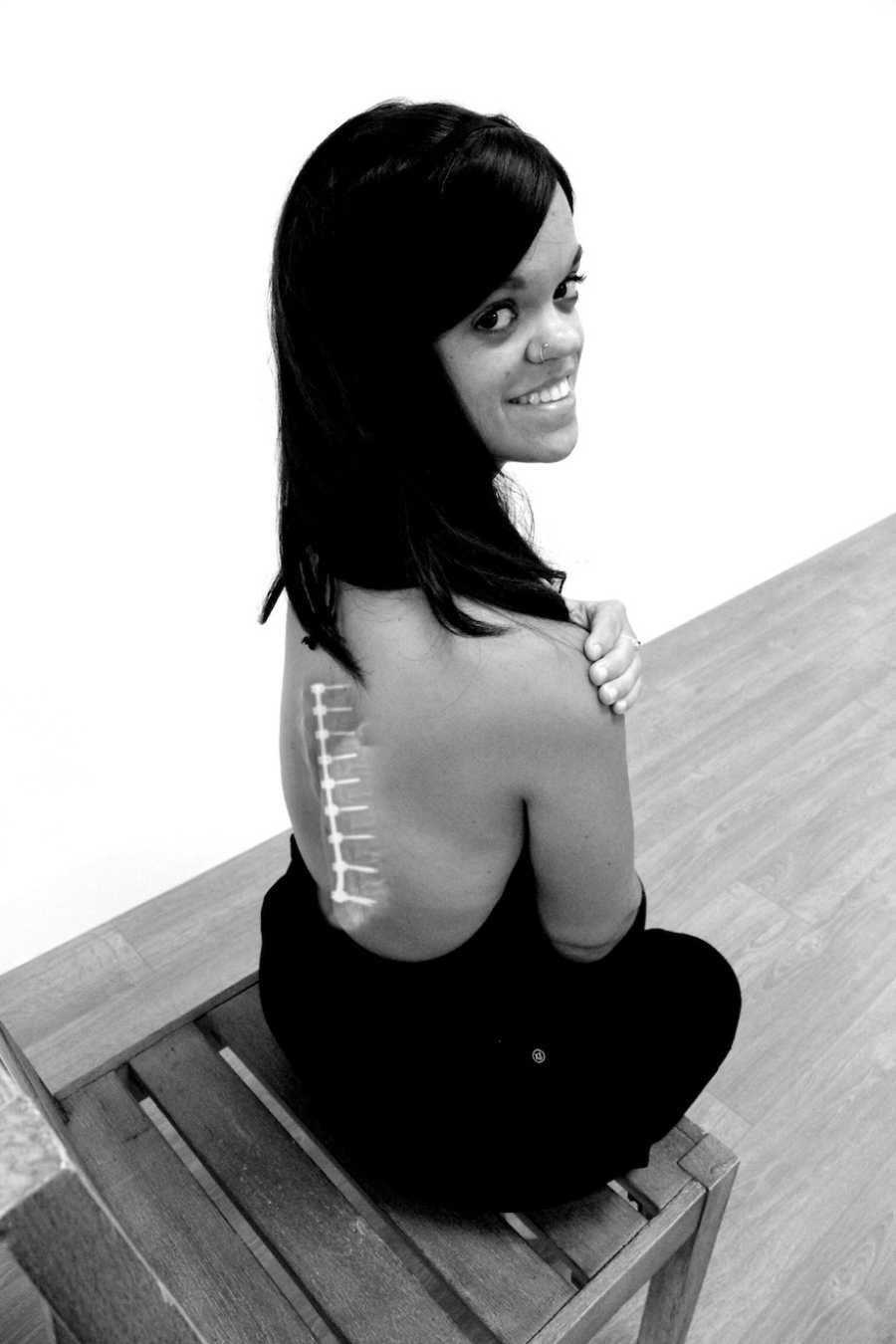
Rock bottom. Yes, I’ve been there. Thirty years old, on disability, financially dependent on my parents, using food stamps, drowning in medical bills, and trying to make ends meet by stamping and stuffing envelopes for a rehabilitation clinic for a little bit of income after leaving behind my community, all while trying to heal and further my medical care in Florida — what turned out to be twelve surgeries in less than 3 years. Life in my little apartment was lonely and I was feeling a little too comfortable in my ‘woe is me’ dark closet of comfort. In a way, it felt as if I had failed, taken a wrong turn and I found myself wondering what my life would be like if I wasn’t born with dwarfism and my spine didn’t decide to nearly paralyze me.
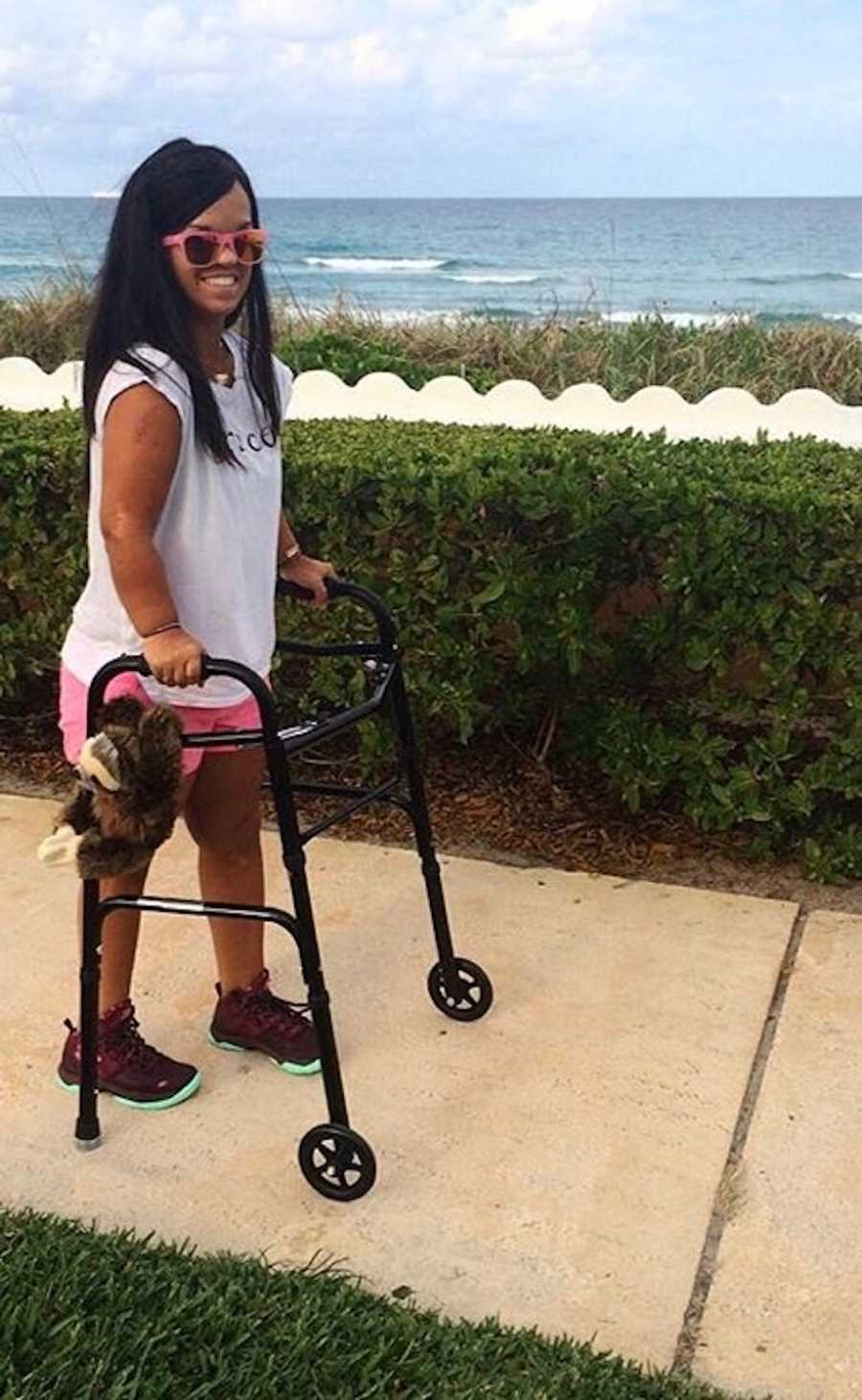
This time the ladder out of my deep hole of despair didn’t come from me but from the team who, in time, would give me independence, mobility, and my life back. Noticing I was in a very dark place, Dr. Feldman and his physician assistant, Tiffany, sat me down and told me, ‘We will not give up on you. We believe in you.’ Those were the only words I needed to hear from two people for whom I have profound love and respect.
Baby steps. We can only take one step at a time and though small, those baby steps move us forward. I forced myself out into my new community, got a job, and refused to give up. When I needed help, I asked for it, facing every hurdle and additional surgery head-on. It wasn’t pretty and that’s okay. The magic always comes from the mess. That light at the end of the tunnel that everyone always talks about? I had to stop waiting for it and create it on my own by doing things that lit me up. So, I published my first memoir, ‘Little Legs, Big Heart,’ and started speaking in schools, with local and international organizations as well as on the TEDx stage, various podcasts, and with online platforms. By stoking my inner fire, life continued to get brighter by the day.
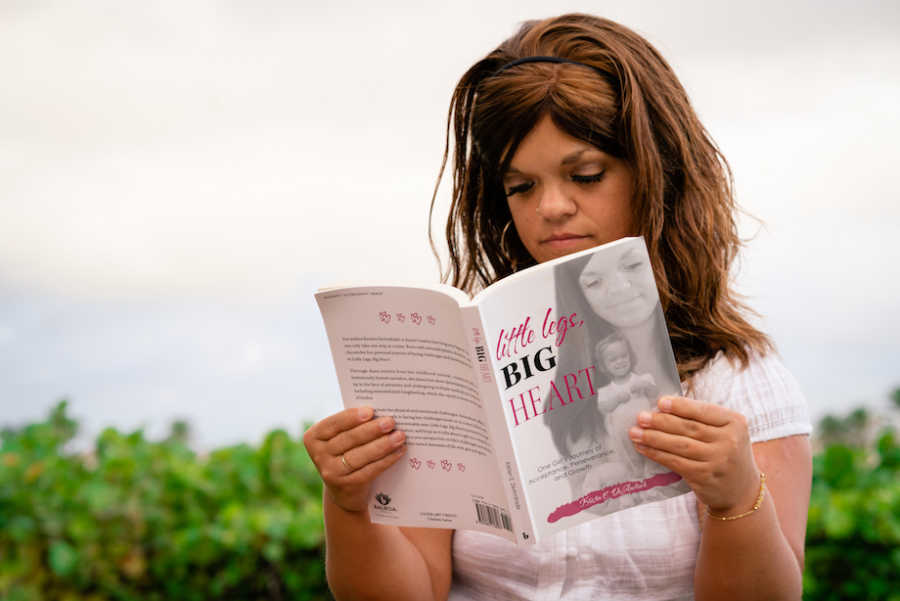
Today, I am the Director of Patient Advocacy for Dr. Feldman and his team. Not only do I have people who recognize my passion as one of my strengths, I am also able to say I love what I do and that is everything. One of the most incredible realizations is I was put on this earth to help others who need the reminder beauty does not exclude, it includes. Real disability stems from our perceptions and attitudes.
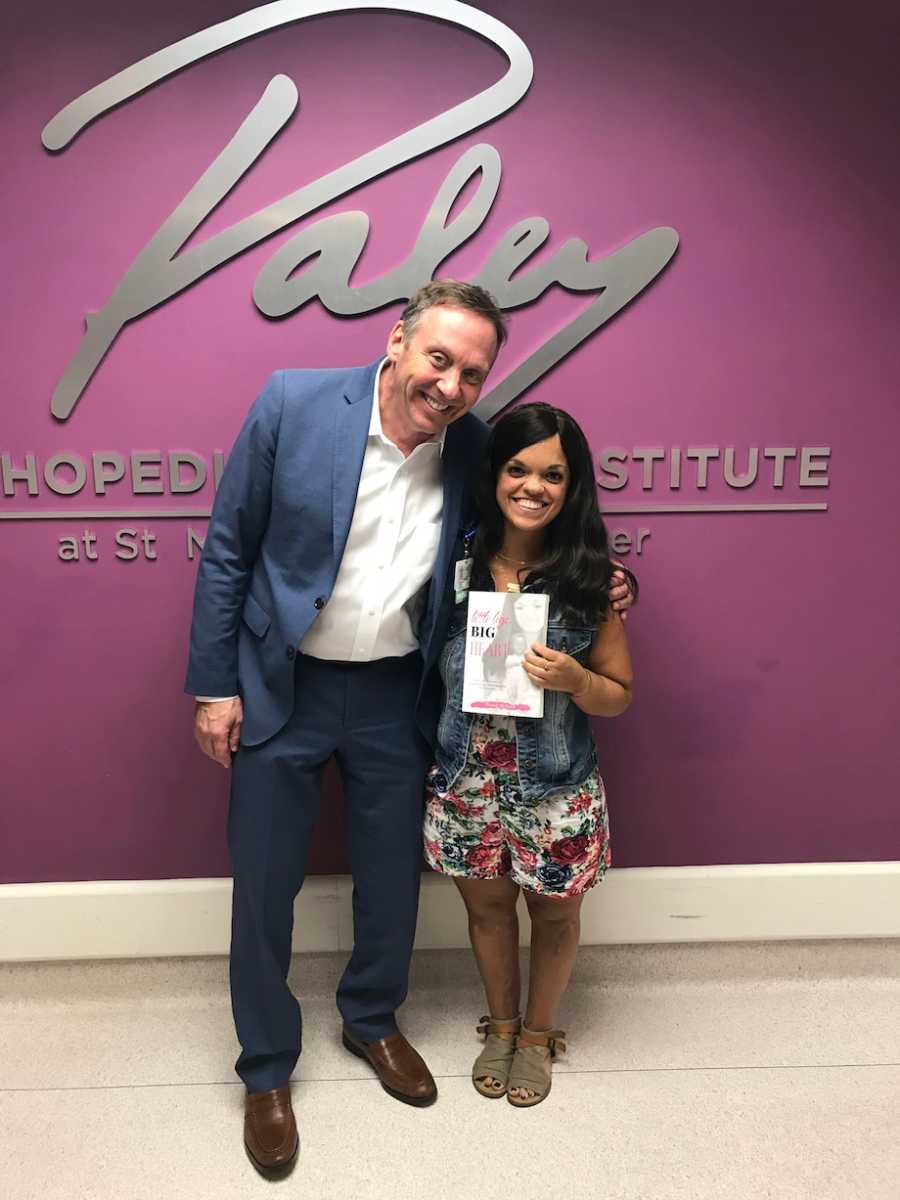
My legs have carried me through a lot in life: meeting people, sharing stories, giving hugs, making room for laughter, shedding tears, absorbing wisdom; all forms of love and all reasons why my heart is bigger than my legs are long. If my honesty can be a means of support for others, I am all in. Whether a child and family are preparing for surgery, an adult with dwarfism is facing complications from spinal stenosis, a teenager feels alone and is carrying the heavy thoughts of, ‘Why me?’ or a twenty-something-year-old woman relates to my current situation — I’m here.
Truthfully, I cannot say I have it all figured out. But these legs, this soul suit, is the house that continues to build me. There are some mornings I wake up, look in the mirror, and ask myself, ‘Kristen, what in the hell are you doing?’ And then other days I can hardly wipe the smile from my face or keep the glitter from bursting out of my veins. And those are the moments that I’m present, knowing that I am exactly where I need to be. Those are the days that I remind myself to bottle up so that I can drink them down when shi* gets hard.
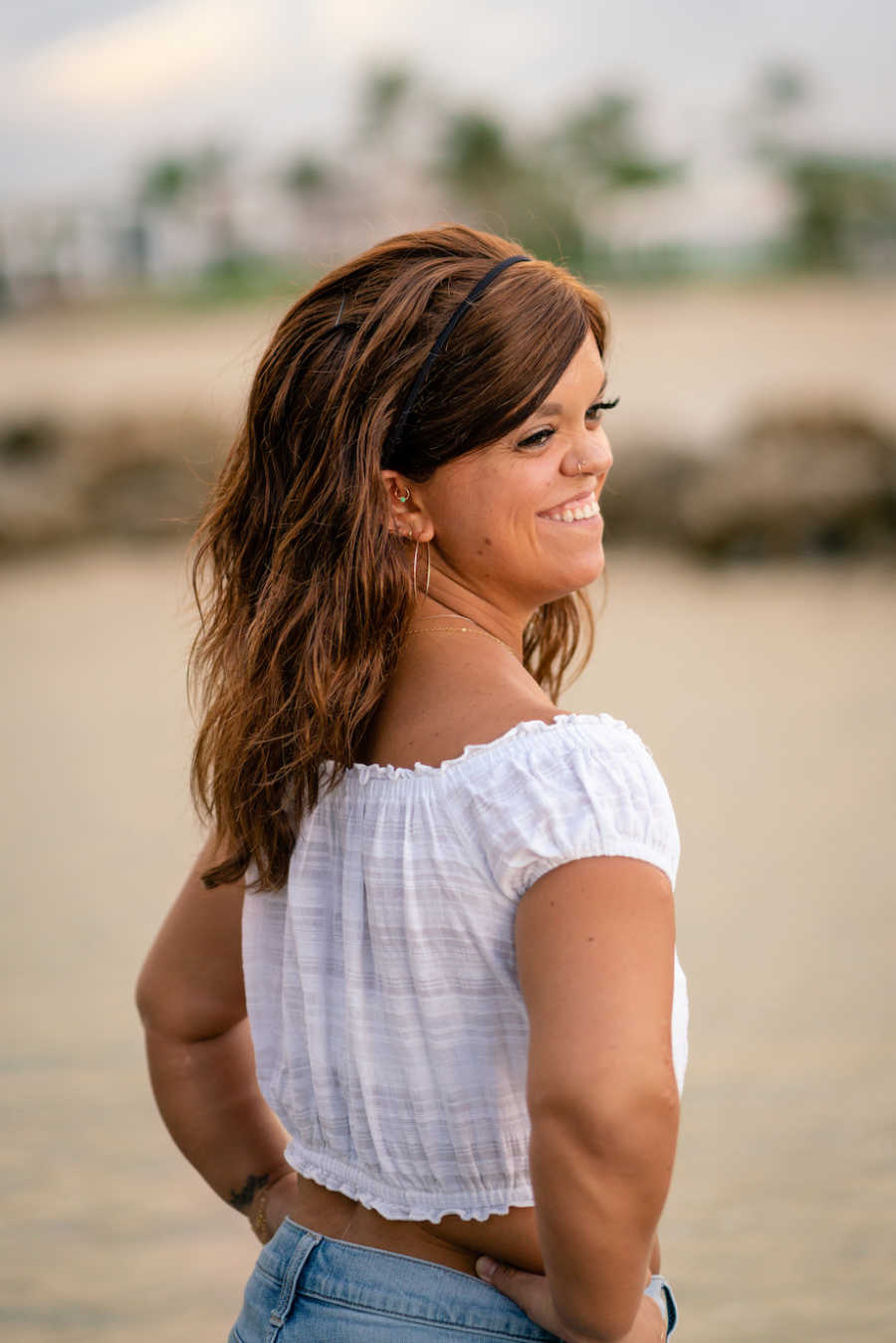
Healing hearts heal hearts and scars are stories meant to be shared. We all have heavy loads of adversity and healing we carry as well as physical and emotional scars. The pressure of feeling like we need to act like everything is fine is the shovel digging the hole deeper. And what I want, more than anything, is to eliminate the stigma that comes with admitting, ‘I am not okay.’ Open your ears, your eyes, and eventually your heart, and your healing will begin. It may happen a little at a time, maybe you start by just listening, then you relate and when you’re ready, you open up and talk.
Don’t deny yourself the opportunity to heal your heart or help someone else heal theirs. Show your scars and share your story.”
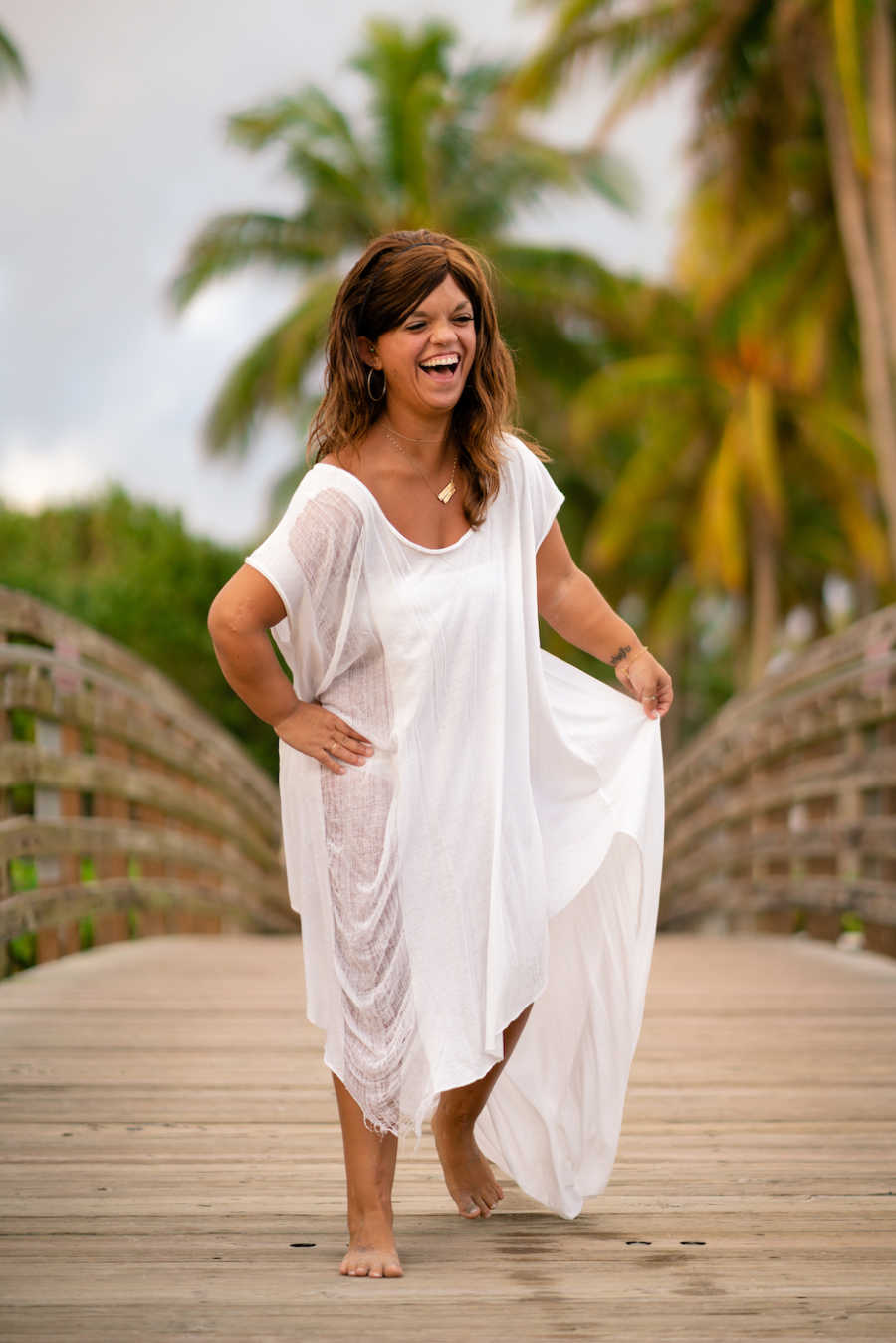
This story was submitted to Love What Matters by Kristen DeAndrade. You can follow their journey on Instagram, Facebook, and their website. Do you have a similar experience? We’d like to hear your important journey. Submit your own story here. Be sure to subscribe to our free email newsletter for our best stories, and YouTube for our best videos.
Read more powerful stories like this:
Provide beauty and strength for others. SHARE this story on Facebook with family and friends.

